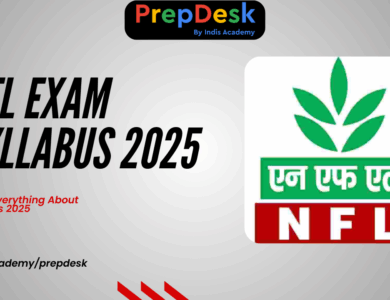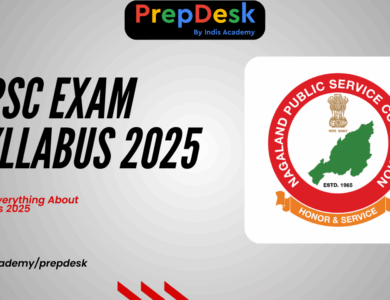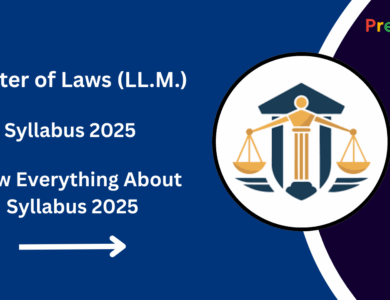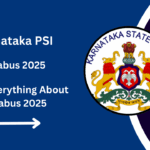GPAT Syllabus 2025 – Complete Subject-Wise Exam Pattern & PDF Download
Discover the latest GPAT syllabus for 2025 including detailed subject-wise topics, exam pattern, marking scheme, and official PDF download. Ideal for M.Pharm aspirants.
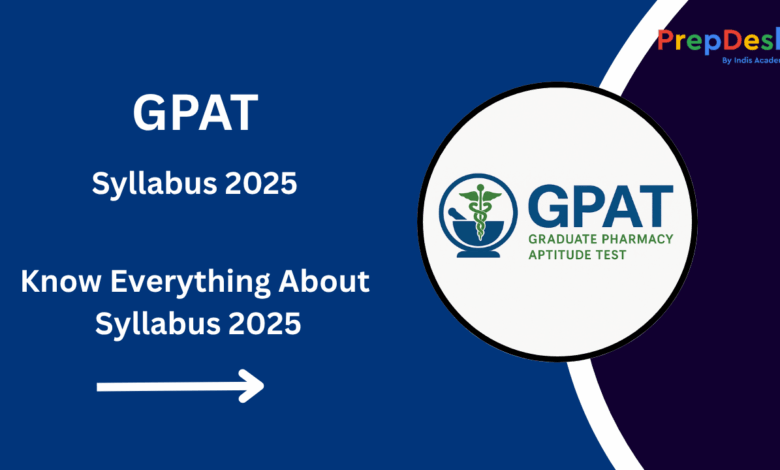
The Graduate Pharmacy Aptitude Test (GPAT) is a prestigious national-level entrance examination conducted by the National Board of Examinations in Medical Sciences (NBEMS). It serves as a gateway for admission into M.Pharm programs offered by top pharmacy colleges across India. GPAT evaluates candidates’ knowledge in core pharmacy subjects such as Pharmaceutics, Pharmaceutical Chemistry, Pharmacology, and Pharmacognosy. To help you prepare effectively, this guide covers the complete GPAT 2025 syllabus, including detailed subject-wise topic lists, marks distribution, recommended study materials, and a PDF download option. Whether you’re targeting top ranks or aiming for NIPER admission, this syllabus guide is essential.
GPAT Exam – Overview
| Feature | Details |
|---|---|
| Conducting Body | NBEMS under PCI (since 2024) |
| Mode & Duration | Online CBT; 3 hours (180 minutes) |
| Total Questions & Marks | 125 questions, 500 total marks; +4 / –1 marking |
| Sections & Subjects | 5 major areas + “other subjects” |
| Score Validity | 3 years |
| Eligibility | B.Pharm (or equivalent); final-year students eligible; Indian citizenship |
| Exam Frequency | Once per year |
| Fees | ₹3,500 (Gen/OBC/EWS), ₹2,500 (SC/ST/PwD) |
GPAT 2025 Syllabus: Subject-Wise Topics & Weightage
| Section | Approx Qs | Marks |
|---|---|---|
| Pharmaceutical Chemistry & Allied | 38 | 152 |
| Pharmaceutics & Allied | 38 | 152 |
| Pharmacognosy & Allied | 10 | 40 |
| Pharmacology & Allied | 28 | 112 |
| Other B.Pharm Subjects | 11 | 44 |
| Total | 125 | 500 |
Duration: 3 Hours
Marking Scheme: +4 for correct, -1 for incorrect
A. Pharmaceutical Chemistry & Allied (38 Qs, 152 Marks)
| Sub-discipline | Topics Covered |
|---|---|
| Organic Chemistry | General principles, functional groups, protection/deprotection, aromaticity, carbonyls, heterocycles, stereochemistry, pericyclic reactions, carbohydrates, amino acids. |
| Medicinal Chemistry | Drug classification, SAR, synthesis pathways, antibiotics, antivirals, anticancer agents, prodrugs, bioisosteres. |
| Pharmaceutical Inorganic Chemistry | Impurities, monographs, radioactive isotopes, dental products, anticaries agents. |
| Physical Chemistry | Thermodynamics, solutions, colligative properties, electrochemistry, pH, buffers, kinetics. |
| Pharmaceutical Analysis | Spectroscopy (UV, IR, NMR), chromatography, titrimetry, QA/QC, mass spec, potentiometry. |
| Biochemistry | Enzymes, carbohydrates, lipids, proteins, DNA/RNA, vitamins, metabolism, redox biology. |
B. Pharmaceutics & Allied (38 Qs, 152 Marks)
| Sub-discipline | Topics Covered |
|---|---|
| Physical Pharmacy | States of matter, micromeritics, surface tension, rheology, viscosity, solubility, buffer action. |
| Pharmaceutical Dosage Forms | Formulation of tablets, capsules, emulsions, suspensions, parenterals, ophthalmics, aerosols, cosmetics, biologicals. |
| Pharmaceutical Engineering | Unit operations (drying, mixing, filtration), heat and mass transfer, scale-up, GMP, validation. |
| Biopharmaceutics & Pharmacokinetics | BCS classification, bioavailability, compartment models, clearance, half-life, drug interactions. |
| Pharmaceutical Jurisprudence | D&C Act, Pharmacy Act, IPR, DPCO, factory and shop laws, ethics, regulatory agencies. |
| Dispensing & Hospital Pharmacy | Compounding, labeling, prescriptions, posology, medication adherence, patient counseling. |
C. Pharmacognosy & Allied (10 Qs, 40 Marks)
- Crude drug classification
- Phytochemical groups: alkaloids, glycosides, tannins, terpenoids
- Extraction and isolation techniques
- Plant tissue culture
- Standardization and evaluation
- Adulteration, traditional systems of medicine
D. Pharmacology & Allied (28 Qs, 112 Marks)
| Topic | Concepts Covered |
|---|---|
| General Pharmacology | Mechanism of action, drug-receptor interactions, pharmacokinetics, ADRs, interactions |
| CNS Drugs | Antipsychotics, antidepressants, antiepileptics, analgesics, general anesthetics |
| CVS Drugs | Anti-hypertensives, anti-anginals, diuretics, beta-blockers |
| PNS Drugs | Cholinergics, anticholinergics, sympathomimetics, blockers |
| Endocrine Drugs | Insulin, glucocorticoids, sex hormones, thyroid drugs |
| GI and Respiratory Drugs | Proton pump inhibitors, laxatives, anti-asthmatics |
| Chemotherapy | Antibiotics, antivirals, antifungals, anticancer agents |
| Immunopharmacology | Vaccines, immunosuppressants, immunomodulators |
| Toxicology | Acute/chronic poisoning, antidotes, drug dependence |
E. Other B.Pharm Subjects (11 Qs, 44 Marks)
| Subject Area | Topics Covered |
|---|---|
| Human Anatomy & Physiology | Structure and function of cells, organs, systems (CVS, GI, CNS, Endocrine) |
| Pathophysiology & Clinical Pharmacy | Inflammation, infection, neoplasia, clinical trials, TDM, ethics |
| Microbiology & Biotechnology | Microbial growth, fermentation, sterilization, rDNA tech, biopharmaceuticals |
| Pharmaceutical Management & QA | Inventory, HR, quality systems, ISO, ICH, TQM |
| Biostatistics & Research Methods | Statistical tests, data analysis, hypothesis testing, research design |
GPAT 2025 Syllabus PDF Download
Download the official GPAT syllabus PDF directly from the link below:
Recommended Books for GPAT 2025
| Subject | Recommended Books |
|---|---|
| Pharmaceutical Chemistry | Mann & Saunders, Morrison & Boyd, Foye’s Medicinal Chemistry |
| Pharmaceutics | Martin’s Physical Pharmacy, Lachman & Lieberman, Remington |
| Pharmacology | Rang & Dale, KD Tripathi, Goodman & Gilman |
| Pharmacognosy | C.K. Kokate, Trease & Evans |
| Microbiology & Biotech | Pelczar, Prescott, Dubey & Maheshwari |
Preparation Tips
- Create a monthly and weekly study plan covering all topics.
- Use PYQs and GPAT mock tests for practice and performance analysis.
- Refer to NIPER and previous rank holders’ study materials.
- Revise formulae, reaction mechanisms, and classifications frequently.
- Focus more on Pharmaceutics and Chemistry, which carry the highest weight.
Specializations After GPAT
1. M.Pharm in Pharmaceutics
Focuses on drug formulation, design, and advanced delivery systems for safe and effective patient treatment.
2. M.Pharm in Pharmaceutical Chemistry
Deals with drug design, synthesis, SAR, and quality control of pharmaceuticals and bioactive molecules.
3. M.Pharm in Pharmacology
Studies drug actions, mechanisms, and therapeutic uses to improve safety and efficacy of medicines.
4. M.Pharm in Industrial Pharmacy
Prepares students for roles in drug manufacturing, quality assurance, and regulatory compliance in pharma industries.
5. M.Pharm in Pharmacognosy
Focuses on natural products, medicinal plants, phytochemistry, and herbal drug development from traditional sources.
Conclusion
The GPAT 2025 syllabus offers a thorough assessment of your pharmacy knowledge across five domains. A solid understanding of the full topic list, supported by strong study material and practice tests, can ensure success. Use the tables above to align your study plan with exam priorities and give yourself enough time to revise high-yield concepts. Stay consistent, practice smartly, and keep your resources updated.
